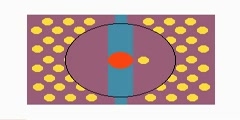Lec 20 - Subgame perfect equilibrium: wars of attrition
"Lec 20 - Subgame perfect equilibrium: wars of attrition" Game Theory (ECON 159) We first play and then analyze wars of attrition; the games that afflict trench warfare, strikes, and businesses in some competitive settings. We find long and damaging fights can occur in class in these games even when the prizes are small in relation to the accumulated costs. These could be caused by irrationality or by players' having other goals like pride or reputation. But we argue that long, costly fights should be expected in these games even if everyone is rational and has standard goals. We show this first in a two-period version of the game and then in a potentially infinite version. There are equilibria in which the game ends fast without a fight, but there are also equilibria that can involve long fights. The only good news is that, the longer the fight and the higher the cost of fighting, the lower is the probability of such a fight. 00:00 - Chapter 1. Wars of Attrition: The Rivalry Game 17:39 - Chapter 2. Wars of Attrition: Real World Examples 24:04 - Chapter 3. Wars of Attrition: Analysis 47:53 - Chapter 4. Wars of Attrition: Discussion of SPEs 01:06:54 - Chapter 5. Wars of Attrition: Generalization Complete course materials are available at the Open Yale Courses website: http://open.yale.edu/courses This course was recorded in Fall 2007.
Video is embedded from external source so embedding is not available.
Video is embedded from external source so download is not available.
Channels: Others
Tags: infinitely repeated games mixed strategies Nash equilibrium subgame perfection war attrition
Uploaded by: yalegametheory ( Send Message ) on 02-09-2012.
Duration: 75m 37s
Here is the next lecture for this course
Lec 19 - Subgame perfect equilibrium: mat ...
01:17:09 | 3323 viewsLec 6 - Nash equilibrium: dating and Cournot
01:12:06 | 3921 viewsLec 8 - Nash equilibrium: location, segre ...
01:13:50 | 3942 viewsLec 5 - Nash equilibrium: bad fashion and ...
01:09:14 | 3578 viewsLec 22 - Repeated games: cheating, punish ...
01:15:47 | 3345 viewsLec 10 - Mixed strategies in baseball, da ...
01:13:32 | 3273 viewsLec 9 - Mixed strategies in theory and tennis
01:12:53 | 3289 viewsLec 7 - Nash equilibrium: shopping, stand ...
01:11:21 | 3047 viewsLec 60 - Prisoners' Dilemma and Nash Equi ...
09:21 | 3063 viewsLec 61 - More on Nash Equilibrium
06:31 | 2866 viewsLec 11 - Evolutionary stability: cooperat ...
01:12:07 | 3539 viewsLec 15 - Backward induction: chess, strat ...
01:12:39 | 3852 viewsLec 18 - Imperfect information: informati ...
01:15:58 | 3762 viewsLec 21 - Repeated games: cooperation vs. ...
01:15:19 | 3483 viewsHow chemical equilibrium is achieved in cells
01:28 | 17907 viewsNo content is added to this lecture.
This video is a part of a lecture series from of Yale
Lecture list for this course
Lec 1 - Introduction: five first lessons
Lec 2 - Putting yourselves into other people's shoes
Lec 3 - Iterative deletion and the median-voter theorem
Lec 4 - Best responses in soccer and business partnerships
Lec 5 - Nash equilibrium: bad fashion and bank runs
Lec 6 - Nash equilibrium: dating and Cournot
Lec 7 - Nash equilibrium: shopping, standing and voting on a line
Lec 8 - Nash equilibrium: location, segregation and randomization
Lec 9 - Mixed strategies in theory and tennis
Lec 10 - Mixed strategies in baseball, dating and paying your taxes
Lec 11 - Evolutionary stability: cooperation, mutation, and equilibrium
Lec 12 - Evolutionary stability: social convention, aggression, and cycles
Lec 13 - Sequential games: moral hazard, incentives, and hungry lions
Lec 14 - Backward induction: commitment, spies, and first-mover advantages
Lec 15 - Backward induction: chess, strategies, and credible threats
Lec 16 - Backward induction: reputation and duels
Lec 17 - Backward induction: ultimatums and bargaining
Lec 18 - Imperfect information: information sets and sub-game perfection
Lec 19 - Subgame perfect equilibrium: matchmaking and strategic investments
Lec 21 - Repeated games: cooperation vs. the end game
Lec 22 - Repeated games: cheating, punishment, and outsourcing
Lec 23 - Asymmetric information: silence, signaling and suffering education
Lec 24- Asymmetric information: auctions and the winner's curse















